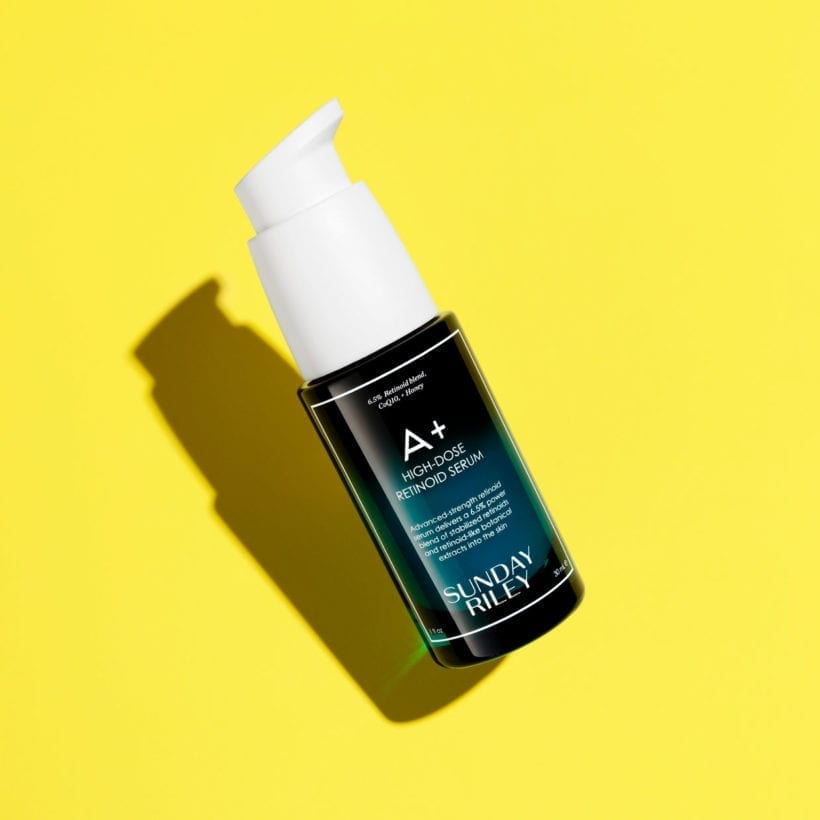Every time I catch a glimpse of my bare arms in the mirror or run a hand over my sore triceps in the gym, I have the same frustrated grimace. No matter how much lotion I use or how much I exfoliate, the skin is always, without fail, speckled with a field of tiny red bumps. It is not actually bothersome — not itchy or painful like eczema — so most of the time I forget the bumps are even there. But it is all the more frustrating when I do notice them.
These bumps have been decorating my upper arms for as long as I can remember. Was it a rash? A plague of tiny pimples? An epidemic of minuscule moles? Only in the last few years have I finally learned what they are: a common skin condition called keratosis pilaris (KP).
Meet the Experts
Sunday Riley , CEO, founder and product formulator
Lily Talakoub, M.D. , a board-certified dermatologist at the McClean Dermatology and Skincare Center in Virginia
Shari Marchbein , M.D., a board-certified dermatologist in New York
What is Keratosis Pilaris?
Sometimes colloquially referred to as “chicken skin” (since the tiny red bumps resemble the skin of a plucked chicken), KP is a common skin condition that causes rough, bumpy patches typically on the upper arms, thighs, butt or even sometimes on the face. It is totally harmless, but it can be annoying.
So, what exactly is going on to produce the ever-present rash-like effect? “Keratosis pilaris is a genetic condition where the hair follicles produce a cone of keratin,” explains Lily Talakoub, M.D., a board-certified dermatologist at the McClean Dermatology and Skincare Center in Virginia. Essentially, the cone is like a tiny plug of dead skin cells jamming up the hair follicle, often causing it to appear mildly red and inflamed and feel slightly rough or prickly to the touch. (KP bumps can also appear flesh-colored, white, pinkish purple or brownish-black, according to the American Academy of Dermatology (AAD).
The bottom line: There is no miracle cure for keratosis pilaris
I wondered if it might be stress-related since stress can do a number on your skin, but Talakoub says, that is not the case with KP — no amount of meditating or avoiding inflammatory foods in your diet will help calm the mild inflammation. KP is genetic, meaning there is unfortunately nothing you can do to prevent it. Most people start to notice the bumps in childhood or once they hit their teens (thanks to the hormonal roller coaster of puberty). That being said, “because it’s an indication of sensitive or dry skin, it will often be found in the same patients who have eczema,” says Shari Marchbein, M.D., a board-certified dermatologist in New York.
The bottom line: There is no miracle cure for keratosis pilaris, Talakoub says. But the good news is that it is a pretty mild condition — for some people the “chicken skin” even goes away on its own (or gets noticeably better as you age), according to a Mayo Clinic study.
How to Smooth Things Over
A lot of people are not bothered by KP (truth be told, I notice mine less and less the older I get). But if you do want to do something about your “chicken skin” — and there is no shame in that — there are a few topical options that can help contain it, Talakoub says.
Step 1: Exfoliate
Since keratosis pilaris is caused by plugged hair follicles, exfoliating can help clear things up. Dry brushing, gentle scrubs and exfoliating body brushes like the Clarisonic, can all help smooth skin.
You can also go the chemical route. Skincare products containing alpha-hydroxy acids, like lactic acid and beta hydroxy acids, like salicylic acid, can all help remove dead skin cells and soften your skin. Topical retinoids, which work by promoting cell turnover, can also help you minimize the issue by preventing hair follicles from becoming plugged.
“Charcoal Smoothie Jelly Body Scrub with salicylic acid is your go-to for an ultra-deep cleanse. Its blend of detoxifying charcoal and pore-clearing clay provides a serious refresh, leaving skin visibly smoother, softer, and perfectly polished. It tackles impurities without stripping or drying, making it perfect for balanced, refreshed skin. It is formulated for every skin type. From oily and blemish-prone to sensitive skin, this detoxifying mask helps everyone achieve a smooth, clear look,” adds Sunday Riley.
On the other end of the spectrum, there is a more intense exfoliation option: microdermabrasion, “which is a mechanical exfoliator that should always, always be followed up with moisturizer,” Talakoub says. (Think of it like a very intense loofah session.) You can also talk to your dermatologist about stronger topical prescription options that contain higher doses of exfoliating ingredients like corticosteroids.
Whatever you do, avoid “picking” at your skin or extractions, which can make the redness and inflammation of these “chicken skin” bumps worse.
Step 2: Hydrate
Keratosis pilaris does have some environmental triggers. “Dry air, dry heat and the winter months can exacerbate KP,” explains Talakoub, which means on the flip side, humidity and moisture help reduce the roughness — this is why many people notice the bumps look better during the summer months.

This is great news if you live in a tropical environment (or have a humidifier in your home). If you do not, constant moisturization is key. It will not make the “chicken skin” disappear but it can make the bumps feel markedly less prickly. Pro tip: Moisturizers specifically formulated for treating KP often pack a one-two punch, hydrating skin while also delivering a dose of exfoliating lactic acid or urea.
Step 3: Seek Out a Keratosis Pilaris Treatment
If exfoliating and moisturizing are not cutting it, and the KP still really bothers you, the AAD recommends laser treatments. “Dermatologists will occasionally use a vascular laser such as a pulsed dye laser to try to improve the redness often associated with KP,” says Marchbein. “A combination of laser treatments can reduce swelling and redness and tackle any pigmentation. However, this is not necessary, nor is there a guarantee to improve redness, since KP is a natural skin variant.”
The major caveat here is that none of these options will cure your keratosis pilaris — to keep seeing the skin-smoothing effects, you will have to keep up the exfoliating and moisturizing routine indefinitely. And more importantly, dermatologists stress that “chicken skin” is totally normal — it does not require treatment and shouldn’t be stigmatized. But if you are looking for an excuse to move to a tropical climate, we will not stop you.
We only recommend products we have independently researched, tested, and loved. If you purchase a product found through our links, Sunday Edit may earn an affiliate commission.
Editor’s note: This article has been updated since its original publication in November 2019.











